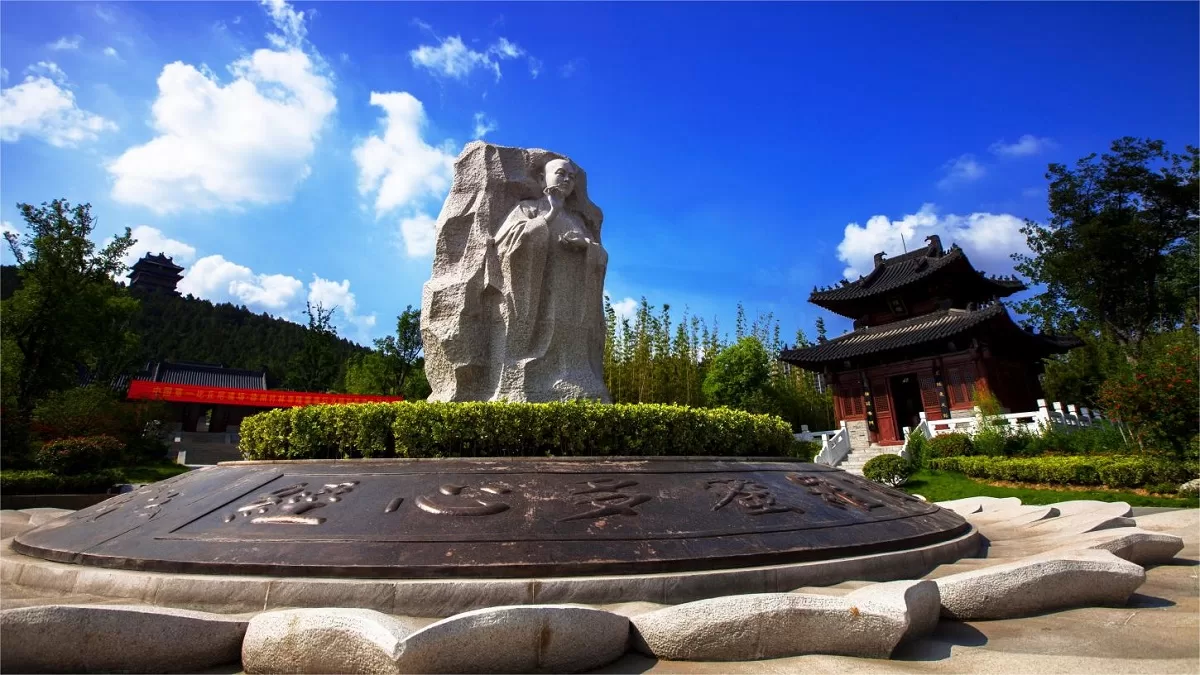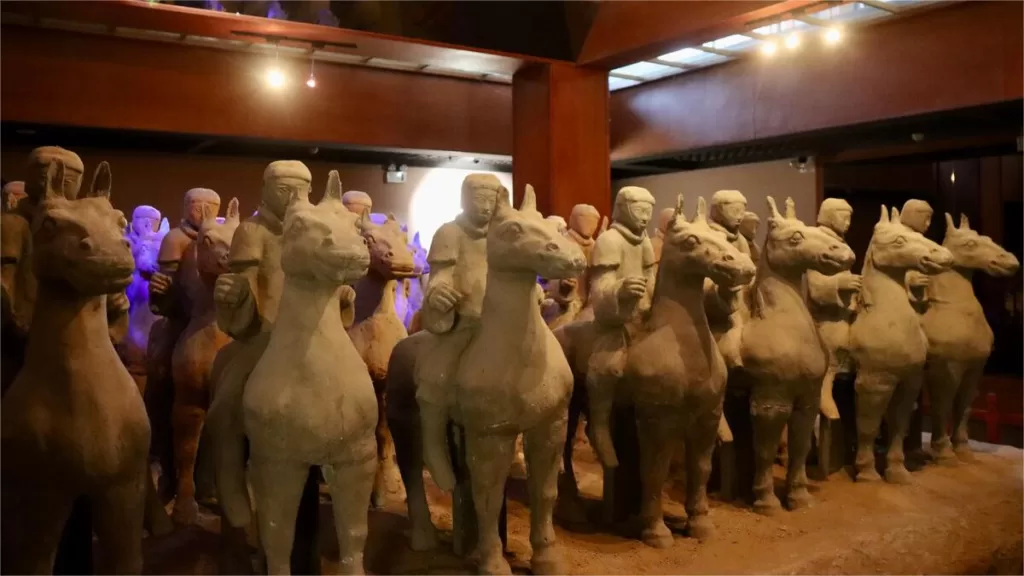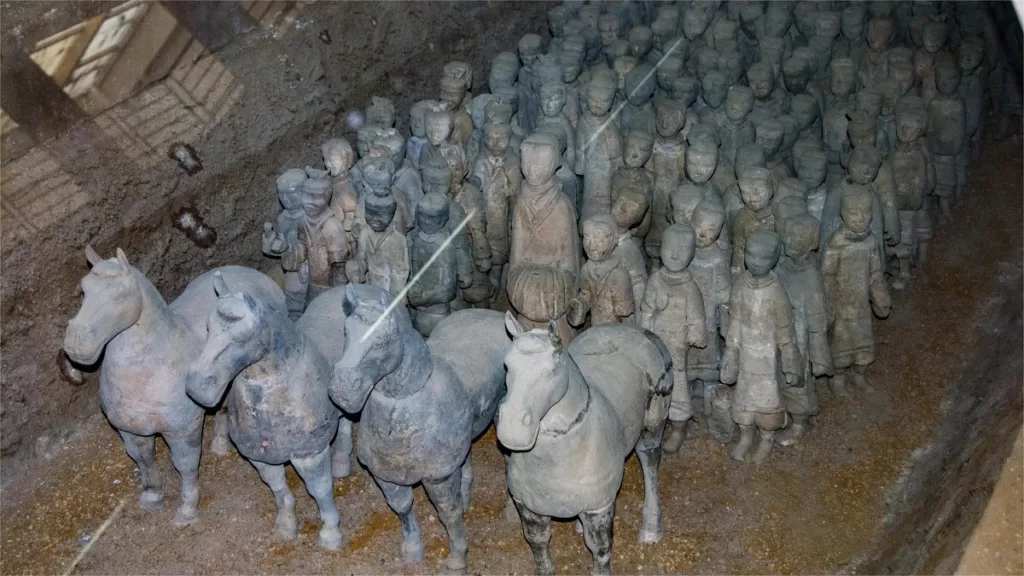Zhulin Temple (竹林寺, Bamboo Forest Temple), located on Camel Mountain in Xuzhou City, was originally named Qingyuan Temple. It was renamed Zhulin Temple by the imperial decree of Emperor Mu of Jin Dynasty. With a history spanning over 1,600 years, Zhulin Temple holds the distinction of being China’s first monastery dedicated to the practice of female monks. It was founded and named by the country’s first bhikkhuni, Master Jingjian, in Luoyang. Born in the waning years of the Western Jin Dynasty in 291 AD, Master Jingjian entered monastic life at the age of 24 and passed away at the age of 70.
Throughout the centuries, Zhulin Temple experienced numerous constructions and demolitions. In 2004, the temple was meticulously reconstructed, featuring key structures like the main hall on the mountaintop, Guanyin Pavilion, the memorial hall for China’s first bhikkhuni, Jingjian Women’s Institute of Zhulin Temple, three memorial pavilions, and the north and south mountain gates. The restoration successfully recaptured the profound and tranquil ambiance of the millennium-old Zhulin Temple. Set against the picturesque backdrop of Lion Mountain, the temple has become a revered pilgrimage site for female devotees, combining spiritual significance with the beauty of the natural surroundings.
Table of Contents
- Basic Information
- Location and Transportation
- Buldings in Zhulin Temple
- Vlog about Zhulin Temple
- Attractions near Zhulin Temple
Basic Information
| Estimated Length of Tour | 1 hour |
| Ticket Price | Free |
| Opening Hours | 9.00 – 17.00 |
Location and Transportation
Zhulin Temple is situated at the eastern foot of Camel Mountain, precisely at the head of Heping Bridge in Xuzhou City, Jiangsu Province. It forms an integral part of Xuzhou Han Culture Scenic Spot. The specific address is 18 Heping Avenue, Yunlong District.
To get there, tourists can take bus 32, 70, or 612 and get off at Zhulin Temple Stop (竹林寺站).
Buldings in Zhulin Temple
South Mountain Gate
Zhulin Temple boasts a meticulously designed layout, each section rich with cultural and historical significance. The journey through the temple’s grounds begins at the South Mountain Gate, where a square showcases the Dharma appearance of Master Jingjian. The pedestal, adorned with 24 lotus petals inside and out, symbolizes the age of 24 when Master Jingjian entered monastic life.
Hall of Heavenly Kings
Ascending from the square leads to the Hall of Heavenly Kings, where the central deity is Maitreya Bodhisattva. Maitreya’s image is based on the likeness of a monk from Ningbo’s Fenghua during the Five Dynasties period. Legend has it that this monk was a weather forecaster, and if people saw him wearing wet cloth shoes, it was a sure sign of rain the next day.
Hall of Three Saints
Beyond the Hall of Heavenly Kings lies the Hall of Three Saints, dedicated to the practice of chanting and meditation by the monastic community. The hall venerates the “Western Three Saints”: Amitabha Buddha, accompanied by Avalokiteshvara Bodhisattva and Mahasthamaprapta Bodhisattva on his left and right sides.
Liu Ying and Zuo Rong Memorial Pavilion
Heading west from the Hall of Three Saints, you encounter the Liu Ying and Zuo Rong Memorial Pavilion. Both figures contributed significantly to Buddhism in Xuzhou. Liu Ying, the prince of Chu, embraced Buddhism in his later years and played a crucial role in spreading Buddhism in the eastern coastal region with Xuzhou as its center. Zuo Rong, after participating in the failed Yellow Turban Rebellion, sought refuge with the Xuzhou governor Tao Qian. He, too, embraced Buddhism and constructed temples during his tenure, some large enough to accommodate thousands of worshippers.
Bell and Drum Tower
Adjacent to the Memorial Pavilion is the Bell and Drum Tower. The striking of the temple’s bell and drum follows a precise ritual, known as “Morning Bell, Evening Drum.” In the morning, the bell is struck three times before dawn, with each round consisting of 18 fast and 18 slow strikes, repeated three times for a total of 108 strikes. The significance of 108 strikes is said to represent the 108 troubles humans face, and by tolling the bell 108 times, it is believed that worldly worries are dispelled.
Grand Hall of Sakyamuni Buddha
Continuing upwards brings you to the Grand Hall of Sakyamuni Buddha, reached by ascending 291 steps, symbolizing Master Jingjian’s birth in the year 291 AD. The 291 steps are divided into seven segments. In the main hall of the Grand Hall, Sakyamuni Buddha is enshrined.
Memorial Hall of Master Jingjian
To the west of the Grand Hall stands the Memorial Hall of Master Jingjian, featuring a seated statue of the revered master. On the eastern side, behind the Grand Hall, is the Guanyin Pavilion. Rising 23 meters, the pavilion provides a staircase for visitors to ascend, offering panoramic views of the entire temple complex and the main city area.





There are two entrances. The main entrance is located at the end of Heping Bridge, not far from Heping Bridge Station on Metro Line 3. Along the steps are the Stone Archway, Bamboo Forest Temple, and further up is the highest point Guanyin Pavilion. Heading down, you will find the Hall of Three Saints and the Hall of Heavenly Kings. Then you can enter the Han Cultural Area.